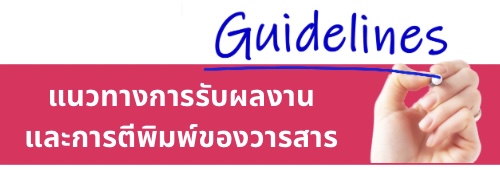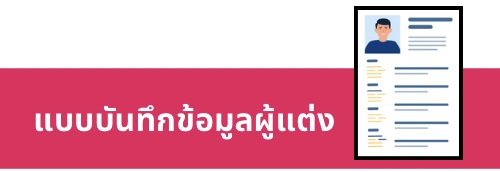ปัจจัยทำนายระดับน้ำตาลเฉลี่ยสะสมในเลือดของผู้ป่วยเบาหวานชนิดที่ 1 ภายใต้สถานการณ์การระบาดของไวรัสโคโรนา 2019
คำสำคัญ:
การใช้ระบบทางไกล, เบาหวานชนิดที่ 1, ภาวะน้ำตาลในเลือดต่ำ, ระดับน้ำตาลเฉลี่ยสะสมในเลือดบทคัดย่อ
การศึกษานี้เป็นการศึกษาปัจจัยที่มีอิทธิพลต่อระดับน้ำตาลเฉลี่ยสะสมในเลือดของผู้ป่วยเบาหวานชนิดที่ 1 ภายใต้สถานการณ์การระบาดของไวรัสโคโรนา 2019 ตัวอย่าง คือ ผู้ดูแลหลักที่มีอายุมากกว่าหรือเท่ากับ 18 ปี ที่ดูแลผู้ป่วยเบาหวานชนิดที่ 1 ที่เข้ารับการรักษาที่คลินิกเบาหวานเด็กและวัยรุ่น โรงพยาบาลศิริราช จำนวน 184 คน เครื่องมือที่ใช้ ได้แก่ แบบสอบถามข้อมูลส่วนบุคคล แบบสอบถามข้อมูลเกี่ยวกับการดูแลตนเองเรื่องเบาหวาน แบบสอบถามการเข้าถึงบริการสุขภาพ และแบบบันทึกข้อมูลระดับน้ำตาลเฉลี่ยสะสมในเลือด วิเคราะห์ข้อมูลด้วยสถิติพรรณนาและสถิติถดถอยพหุคูณ
ผลการศึกษา พบว่า อายุ การใช้ระบบทางไกล และภาวะน้ำตาลในเลือดต่ำ สามารถร่วมอธิบายระดับน้ำตาลเฉลี่ยสะสมในเลือดของผู้ป่วยเบาหวานชนิดที่ 1 ภายใต้สถานการณ์การระบาดของไวรัสโคโรนา 2019 ได้ร้อยละ 13 (R2 = .13, p < .001) ดังนั้น บุคลากรทางสุขภาพควรประชาสัมพันธ์การให้บริการการพบแพทย์โดยการใช้ระบบทางไกลอย่างต่อเนื่องและทั่วถึง เพื่อให้ผู้ป่วยเบาหวานชนิดที่ 1 ได้รับการติดตามจากแพทย์ผู้ดูแลอย่างใกล้ชิด และพัฒนาโปรแกรมที่ส่งเสริมพฤติกรรมการจัดการตนเองด้านเบาหวานแก่ผู้ป่วยเบาหวานชนิดที่ 1 และผู้ดูแลหลักผ่านระบบทางไกล เพื่อเน้นย้ำถึงความสำคัญของการดูแลตนเองด้านเบาหวานในสถานการณ์ที่มีการระบาดของไวรัสโคโรนา 2019
Downloads
เอกสารอ้างอิง
All Well. (2022). Telemedicine. Retrieved from https://allwellhealthcare.com/telemedicine/
American Diabetes Association. (2021). Classification and diagnosis of diabetes: Standards of medical care in diabetes. Diabetes Care, 44(Suppl 1), S15-S33.
Chin-Jung, L., Hsiao-Yean, C., Yeu-Hui, C., Kuan-Chia, L., & Hui-Chuan, H. (2021). Effects of mobile health interventions on improving glycemic stability and quality of life in patients with type 1 diabetes: A meta-analysis. Research in Nursing & Health, 44(1), 187-200.
Department of Disease Control. (2022). Corona virus disease (COVID-19). Retrieved from https://ddc.moph.go.th/viralpneumonia/index.php
Department of Mental Health. (2022). Telemedicine. Retrieved from https://www.dmh.go.th/news/view.asp?id=2389
Diabetes Association of Thailand. (2017). Clinical practice guideline for diabetes 2017. Bangkok: Romyen Media.
Pediatric Nursing Division. (2016). The manual of nursing: Children and adolescent patient with type 1 diabetes who were treated by antidiabetic drug injection. Bangkok: Department of Nursing Siriraj Hospital.
Penchansky, R., & Thomas, J. W. (1981). The concept of access: Definition and relationship to consumer satisfaction. Medical Care, 19(2), 127-140.
Poum, A. (2020). Factors effecting to blood sugar level control among type 2 diabetic mellitus patient at Thalang district, Phuket province. Journal of the Office of DPC 7 Khonkaen, 27(2), 44-54.
Polit, D. F., & Beck, C. T. (2003). Nursing research: Principles and method (7th ed.). Philadelphia, PA: Lippincott Williams & Wilkins.
Rosolowsky, E., Yaskina, M., & Couch, R. (2018). Pediatric type 1 diabetes: Patients' and caregivers' perceptions of glycemic control. Canadian Journal of Diabetes, 42(3), 302-307.
So, C. F., & Chung, J. W. (2018). Telehealth for diabetes self-management in primary healthcare: A systematic review and meta-analysis. Journal of telemedicine and telecare, 24(5), 356–364.
Tao, J., Gao, L., Liu, Q., Dong, K., Huang, J., Peng, X., . . . Yang, Y. (2020). Factors contributing to glycemic control in diabetes mellitus patients complying with home quarantine during the coronavirus disease 2019 (COVID-19) epidemic. Diabetes Research and Clinical Practice, 170, 1-10.
Tornese, G., Ceconi, V., Monasta, L., Carletti, C., Faleschini, E., & Barbi, E. (2020). Glycemic control in type 1 diabetes mellitus during COVID-19 quarantine and the role of in-home physical activity. Diabetes Technology & Therapeutics, 22(6), 462-467.
Unicef. (2022). Adolescent situation analysis, Thailand. Retrieved from https://www.unicef.org/thailand/sites/unicef.org.thailand/files/2018-08/adolescent-situation-analysis-thailand-en.pdf
Verma, A., Rajput, R., Verma, S., Balania, V., & Jangra, B. (2020). Impact of lockdown in COVID 19 on glycemic control in patients with type 1 Diabetes Mellitus. Diabetes & Metabolic Syndrome, 14(5), 1213–1216.
Walz, L., Pettersson, B., Rosenqvist, U., Deleskog, A., Journath, G., & Wändell, P. (2014). Impact of symptomatic hypoglycemia on medication adherence, patient satisfaction with treatment, and glycemic control in patients with type 2 diabetes. Patient Preference and Adherence, 8, 593–601.
World Health Organization. (2022). Adolescent health. Retrieved from https://www.who.int/health-topics/adolescent-health/#tab=tab_1
World Health Organization. (2022). Diabetes mellitus. Retrieved from http://www.who.int/diabetes/facts/world_fig_ures/en/l

ดาวน์โหลด
เผยแพร่แล้ว
รูปแบบการอ้างอิง
ฉบับ
ประเภทบทความ
สัญญาอนุญาต
ลิขสิทธิ์ (c) 2022 วารสารพยาบาลตำรวจ

อนุญาตภายใต้เงื่อนไข Creative Commons Attribution-NonCommercial-NoDerivatives 4.0 International License.
ผลงานที่ได้ตีพิมพ์แล้วจะเป็นลิขสิทธิ์ของวารสารพยาบาลตำรวจ














